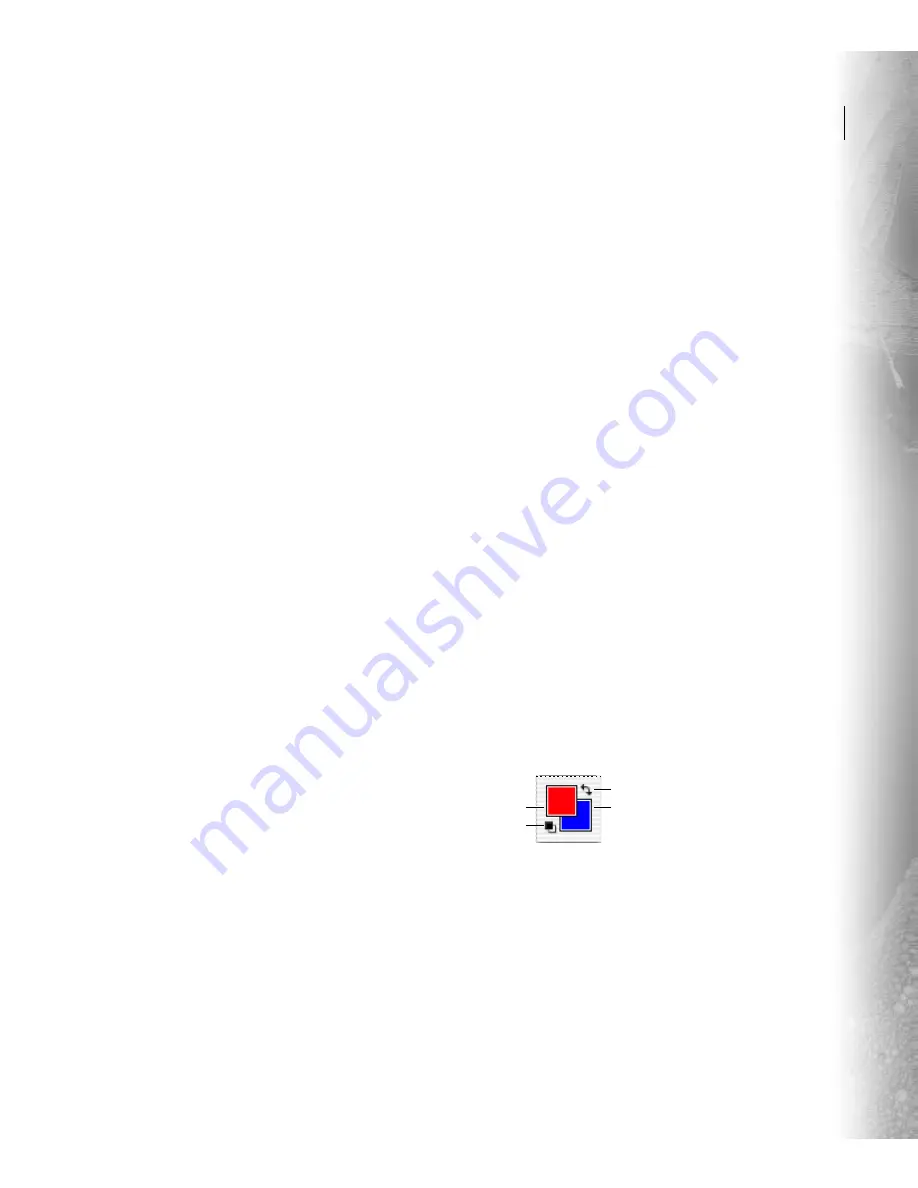
127
Chapter 8: Painting
ou can paint, erase, and fill areas of your
image with several different tools in Adobe
Photoshop Elements. By customizing the
options for these tools, you can create sophisti-
cated effects. Other tools and commands let you
transform and stylize an image.
About painting and drawing
When you create graphics in Photoshop Elements,
there is a distinction between painting and
drawing. Painting involves changing the colors of
pixels using a painting tool. Drawing involves
creating shape layers, type layers, and fill layers.
These layer types contain vector graphics, which
are defined by geometric characteristics rather
than by pixels. For example, if you draw a circle
shape using the ellipse tool, the circle is defined by
a specific radius, location, and color. To paint on
these layers and apply certain layer effects to them,
you must first convert the vector data to bitmap
data by simplifying the layer (see “Simplifying
layers” on page 110).
Photoshop Elements provides many ways to
creatively enhance your images. You can paint, fill,
or trace with preset colors, patterns, and color
gradients, or with customized patterns and
gradients you create.
When you want to transform your image without
adding new colors or patterns, a few tools allow
you to change the image details with stylized brush
strokes. When you want to remove areas from your
image, you can select from several different eraser
tools.
After you choose a painting or erasing tool, you
can set tool options to control blending mode,
opacity, brush style and size, and other options
that are unique to each tool.
Selecting foreground and
background colors
The toolbox displays a foreground color and a
background color in two overlapping color boxes.
Photoshop Elements uses the foreground color to
paint, fill, and trace selections and shapes, and it
uses the background color to create fills, such as
gradient fills and fills in erased areas of the image
background. The foreground and background
colors are also used by some special effects filters.
Foreground and background color boxes in toolbox
A.
Foreground color box
B.
Default colors icon
C.
Switch colors icon
D.
Background color box
Y
A
D
C
B






























